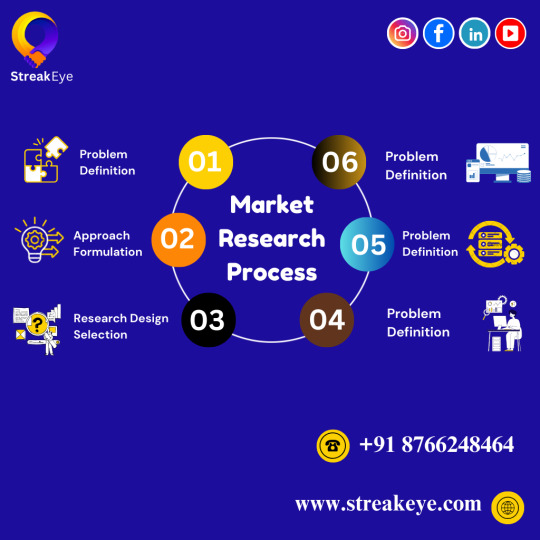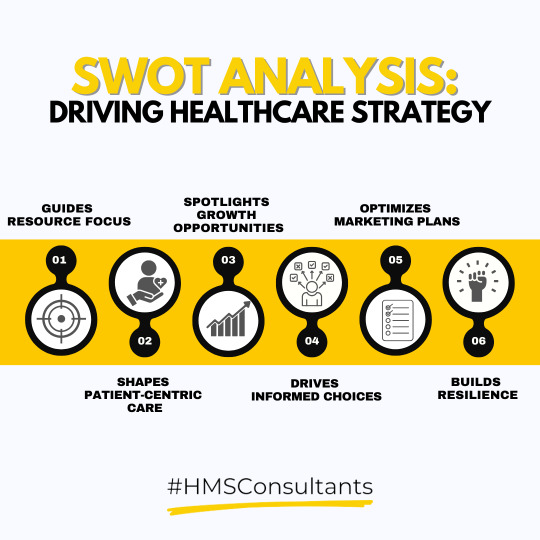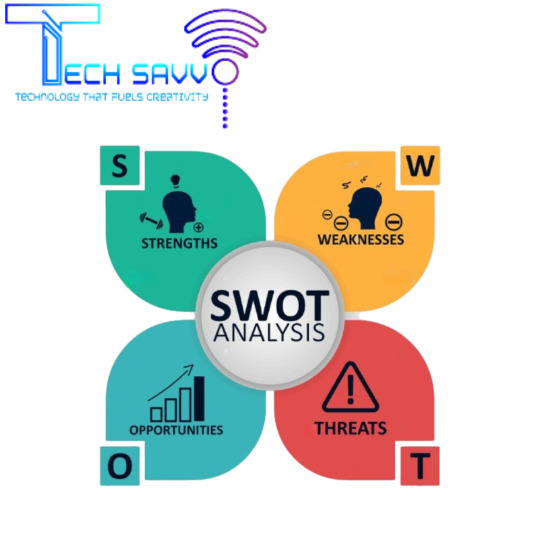#swotanalysis
Explore tagged Tumblr posts
Text
Generate corporate profiles rich with data with CorporateBots from @Lemonbarski on POE.
It’s free to use with a free POE AI account. Powered by GPT3 from OpenAI, the CorporateBots are ready to compile comprehensive corporate data files in CSV format - so you can read it and so can your computer.
Use cases: Prospecting, SWOT analysis, Business Plans, Market Assessment, Competitive Threat Analysis, Job Search.
Each of the CorporateBots series by Lemonbarski Labs by Steven Lewandowski (@Lemonbarski) provides a piece of a comprehensive corporate profile for leaders in an industry, product category, market, or sector.
Combine the datasets for a full picture of a corporate organization and begin your project with a strong, data-focused foundation and a complete picture of a corporate entity’s business, organization, finances, and market position.
Lemonbarski Labs by Steven Lewandowski is the Generative AI Prompt Engineer of CorporateBots on POE | Created on the POE platform by Quora | Utilizes GPT-3 Large Language Model Courtesy of OpenAI | https://lemonbarski.com | https://Stevenlewandowski.us | Where applicable, copyright 2023 Lemonbarski Labs by Steven Lewandowski
Steven Lewandowski is a creative, curious, & collaborative marketer, researcher, developer, activist, & entrepreneur based in Chicago, IL, USA
Find Steven Lewandowski on social media by visiting https://Stevenlewandowski.us/connect | Learn more at https://Steven.Lemonbarski.com or https://stevenlewandowski.us
#poe ai#lemonbarski#generative ai#llm#chatbot#chatgpt#open ai#gpt3#data collection services#chicago#swotanalysis#job search#competitive intelligence#companies#csv
2 notes
·
View notes
Text

Her er vår førsteutkast til en SWOT-analyse av emica :)
2 notes
·
View notes
Text
Best Customized Bankable Project Report For Bank Loan in 2023
Best Customized Bankable Project Report For Bank Loan in 2023
A project report is a crucial document required by banks to grant loans to businesses or individuals. A well-crafted project report can make or break your loan application. It is a comprehensive document that provides detailed information about the proposed project, its feasibility, and its expected outcomes. It is essential to customize the project report to fit the specific requirements of the lending institution to increase the chances of loan approval.
#BusinessProjectReport#ProjectManagement#MarketResearch#FinancialAnalysis#BusinessStrategy#SWOTAnalysis#BusinessPlan#MarketingPlan#ProjectProposal#FeasibilityStudy#RiskAssessment#InvestmentAnalysis#BusinessDevelopment#CorporateStrateg#PerformanceAnalysis
2 notes
·
View notes
Text

Have you ever heard of a Personal SWOT Analysis? This analysis helps you understand yourself and consider your career.
0 notes
Note
How much to be a besines men
I'll answer as if you meant to write " business man"
First thing you need, is an idea, either a product or a service, which fulfils a need or a desire for a mass of people.
Now after you define your idea you gotta make up a plan to bring it to life. To make a proper plan, you have to study the market, best tool to do so, is SWOT analysis.
S : strengths
W : weaknesses
O : opportunities
T : threats
Now you need bunch of resources to apply what you planed and launch this business, from financial resources ( a stable source of income like a job, trust fund, inheritance, a treasure you found, a bank you rubbed..) to human resources (aka a team, preferably qualified ppl you do trust ), you also need visibility ( aka popularity aka high demand for your product/service)
Now that you launched this business, you can't call yourself business man/woman untill you do it for a while, and let it absorb your time, energy and money, and embrace this journey of doing business with it's ups and downs, and trusting the process between not even knowing how to count pocket change untill you learn irl how to run a company.

#slaydom#girlslay#that girl#revolution#millionaire#money#marketing#money money money#money matters#get rich or die tryin#business#swotanalysis
0 notes
Text
How to Do Market Research
What Is Market Research?
Market research examines consumer behavior and trends in the economy to help a business develop and fine-tune its business idea and strategy. It helps a business understand its target market by gathering and analyzing data.
Market research is the process of evaluating the viability of a new service or product through research conducted directly with potential customers. It allows a company to define its target market and get opinions and other feedback from consumers about their interest in a product or service.
Research may be conducted in-house or by a third party that specializes in market research. It can be done through surveys and focus groups, among other ways. Test subjects are usually compensated with product samples or a small stipend for their time.
How Market Research Works
Market research is used to determine the viability of a new product or service. The results may be used to revise the product design and fine-tune the strategy for introducing it to the public. This can include information gathered for the purpose of determining market segmentation. It also informs product differentiation, which is used to tailor advertising.
A business engages in various tasks to complete the market research process. It gathers information based on the market sector being targeted by the product. This information is then analyzed and relevant data points are interpreted to draw conclusions about how the product may be optimally designed and marketed to the market segment for which it is intended.
It is a critical component in the research and development (R&D) phase of a new product or service introduction. Market research can be conducted in many different ways, including surveys, product testing, interviews, and focus groups.
Primary Market Research /vs/Secondary Market Research
Market research usually consists of a combination of:
Primary research, gathered by the company or by an outside company that it hires
Secondary research, which draws on external sources of data
Primary Market Research
Primary research generally falls into two categories: exploratory and specific research.
Exploratory research is less structured and functions via open-ended questions. The questions may be posed in a focus group setting, telephone interviews, or questionnaires. It results in questions or issues that the company needs to address about a product that it has under development.
Specific research delves more deeply into the problems or issues identified in exploratory research.
Secondary Market Research
All market research is informed by the findings of other researchers about the needs and wants of consumers. Today, much of this research can be found online.
Secondary research can include population information from government census data, trade association research reports, polling results, and research from other businesses operating in the same market sector.
History of Market Research
Formal market research began in Germany during the 1920s. In the United States, it soon took off with the advent of the Golden Age of Radio.
Companies that created advertisements for this new entertainment medium began to look at the demographics of the audiences who listened to each of the radio plays, music programs, and comedy skits that were presented.
They had once tried to reach the widest possible audience by placing their messages on billboards or in the most popular magazines. With radio programming, they had the chance to target rural or urban consumers, teenagers or families, and judge the results by the sales numbers that followed.
Types of Market Research
Face-to-Face Interviews
From their earliest days, market research companies would interview people on the street about the newspapers and magazines that they read regularly and ask whether they recalled any of the ads or brands that were published in them. Data collected from these interviews were compared to the circulation of the publication to determine the effectiveness of those ads.
Market research and surveys were adapted from these early techniques.
Focus Groups
A focus group is a small number of representative consumers chosen to try a product or watch an advertisement.
Afterward, the group is asked for feedback on their perceptions of the product, the company’s brand, or competing products. The company then takes that information and makes decisions about what to do with the product or service, whether that's releasing it, making changes, or abandoning it altogether.
Phone Research
The man-on-the-street interview technique soon gave way to the telephone interview. A telephone interviewer could collect information in a more efficient and cost-effective fashion.
Telephone research was a preferred tactic of market researchers for many years. It has become much more difficult in recent years as landline phone service dwindles and is replaced by less accessible mobile phones.
Survey Research
As an alternative to focus groups, surveys represent a cost-effective way to determine consumer attitudes without having to interview anyone in person. Consumers are sent surveys in the mail, usually with a coupon or voucher to incentivize participation. These surveys help determine how consumers feel about the product, brand, and price point.
Online Market Research
With people spending more time online, market research activities have shifted online as well. Data collection still uses a survey-style form. But instead of companies actively seeking participants by finding them on the street or cold calling them on the phone, people can choose to sign up, take surveys, and offer opinions when they have time.
This makes the process far less intrusive and less rushed, since people can participate on their own time and of their own volition.
How to Conduct Market Research
The first step to effective market research is to determine the goals of the study. Each study should seek to answer a clear, well-defined problem. For example, a company might seek to identify consumer preferences, brand recognition, or the comparative effectiveness of different types of ad campaigns.
After that, the next step is to determine who will be included in the research. Market research is an expensive process, and a company cannot waste resources collecting unnecessary data. The firm should decide in advance which types of consumers will be included in the research, and how the data will be collected. They should also account for the probability of statistical errors or sampling bias.
The next step is to collect the data and analyze the results. If the two previous steps have been completed accurately, this should be straightforward. The researchers will collect the results of their study, keeping track of the ages, gender, and other relevant data of each respondent. This is then analyzed in a marketing report that explains the results of their research.
The last step is for company executives to use their market research to make business decisions. Depending on the results of their research, they may choose to target a different group of consumers, or they may change their price point or some product features.
The results of these changes may eventually be measured in further market research, and the process will begin all over again.
Benefits of Market Research
Market research is essential for developing brand loyalty and customer satisfaction. Since it is unlikely for a product to appeal equally to every consumer, a strong market research program can help identify the key demographics and market segments that are most likely to use a given product. Market research is also important for developing a company’s advertising efforts. For example, if a company’s market research determines that its consumers are more likely to use Facebook than X (formerly Twitter), it can then target its advertisements to one platform instead of another. Or, if they determine that their target market is value-sensitive rather than price-sensitive, they can work on improving the product rather than reducing their prices.
Visit Now: www.streakeye.com

#MarketResearch#BusinessGrowth#TargetAudience#CompetitiveAnalysis#CustomerInsights#IndustryTrends#MarketingStrategy#ConsumerBehavior#DataAnalysis#BrandPositioning#SurveyResearch#FocusGroups#MarketSegmentation#SWOTAnalysis#BusinessIntelligence#DigitalMarketing#ProductDevelopment#UserFeedback#MarketingTrends#CustomerSatisfaction
0 notes
Text

Learning to be a better person
"Understanding my SWOT analysis (Strengths, Weaknesses, Opportunities, and Threats) helps me tailor my learning style for success. By leveraging my strengths, improving weaknesses, seizing opportunities, and overcoming threats, I can develop more effective study habits and achieve my goals!"
1 note
·
View note
Text
Being a successful Business Analyst requires a mix of technical expertise, analytical skills, and strong communication. This cheat sheet serves as a quick reference to keep you on track and efficient in your role.
#BusinessAnalyst#BA#Agile#Waterfall#ProjectManagement#ProcessImprovement#DataAnalysis#StakeholderManagement#BPMN#SWOTAnalysis#RequirementGathering#UserStories#SQL#JIRA#PowerBI
0 notes
Text
Stay Informed, Stay Competitive with EnFuse Solutions' Proactive Intelligence Services

EnFuse Solutions offers tailored competitive intelligence services to help you outpace competitors. From market analysis to actionable strategies, EnFuse delivers the insights you need to succeed in a dynamic business environment.
To leverage their competitive intelligence services and drive your business success, learn more here: https://www.enfuse-solutions.com/services/ecommerce-services/competitive-intelligence/
#CompetitiveIntelligenceServices#CompetitiveIntelligenceServicesinIndia#CompetitiveIntelligenceCompanies#SWOTAnalysis#MarketAnalysis#CrossReferencing#CompetitiveIntelligenceAnalyst#EnFuseSolutions
0 notes
Text

SWOT Analysis simplifies your path to success in healthcare—guiding resources, spotlighting growth, and optimizing strategies.
Embrace a patient-focused future!
0 notes
Text
Creating a Strategic Roadmap: A Comprehensive Guide

Source: Image-by-SeventyFour
In today’s fast-paced business environment, having a clear direction is crucial for success. This is where the concept of creating a strategic roadmap comes into play. A strategic roadmap serves as a visual representation of a company’s goals, objectives, and the steps needed to achieve them. In this article, we will explore the significance of a strategic roadmap, its components, and the essential steps involved in creating one.
Understanding the Importance of a Strategic Roadmap
Before diving into the intricacies of creating a strategic roadmap, it’s vital to understand why it matters. A strategic roadmap provides clarity and focus, aligning all stakeholders toward common objectives. It helps in:
Setting Clear Goals: A strategic roadmap allows organizations to articulate their long-term goals and the interim steps required to reach them. This clarity minimizes confusion and ensures that everyone is on the same page.
Facilitating Communication: By visualizing the strategic plan, stakeholders can easily understand their roles and responsibilities. This enhances communication across departments and fosters collaboration.
Enabling Performance Tracking: A strategic roadmap provides benchmarks against which progress can be measured. This allows organizations to adjust their strategies in response to changing circumstances or unforeseen challenges.
Enhancing Decision-Making: With a clear strategic direction, decision-makers can make informed choices that align with the overall vision of the organization.
Components of a Strategic Roadmap

Creating a strategic roadmap involves several key components. These elements are essential in guiding the process and ensuring that the roadmap is effective.
Vision and Mission Statement: The foundation of any strategic roadmap is a clear vision and mission statement. The vision defines what the organization aspires to achieve in the long term, while the mission outlines its purpose and core values.
SWOT Analysis: Conducting a SWOT (Strengths, Weaknesses, Opportunities, Threats) analysis is crucial in creating a strategic roadmap. This analysis helps organizations identify internal and external factors that could impact their strategic initiatives.
Goals and Objectives: Clearly defined goals and objectives are central to the roadmap. These should be SMART (Specific, Measurable, Achievable, Relevant, Time-bound) to ensure they are actionable and trackable.
Strategic Initiatives: This section outlines the specific actions that will be taken to achieve the goals and objectives. Each initiative should have a clear purpose and expected outcomes.
Timeline: A timeline is essential for tracking progress and ensuring that milestones are met. This helps in organizing initiatives into phases and prioritizing tasks.
Resources and Budget: Identifying the resources required to execute the strategic initiatives, including human, financial, and technological resources, is vital. This section also includes a budget to allocate funds appropriately.
Steps to Create a Strategic Roadmap
Now that we understand the importance and components of a strategic roadmap, let’s outline the steps involved in creating a strategic roadmap.
Step 1: Define Your Vision and Mission
The first step in creating a strategic roadmap is to clearly define your organization’s vision and mission. Engage key stakeholders to ensure alignment and gather diverse perspectives. This step lays the groundwork for the entire roadmap.
Step 2: Conduct a SWOT Analysis
Next, conduct a SWOT analysis to assess your organization’s internal strengths and weaknesses and external opportunities and threats. This analysis provides valuable insights that will inform your strategic initiatives.
Step 3: Set Goals and Objectives
With your vision and SWOT analysis in mind, establish SMART goals and objectives. These should be aligned with the overall vision and mission, providing a clear direction for your strategic initiatives.
Step 4: Identify Strategic Initiatives

Now, brainstorm and prioritize strategic initiatives that will help achieve your goals. Each initiative should have a clearly defined purpose and outcomes. Involve relevant stakeholders in this process to ensure buy-in and collaboration.
Step 5: Develop a Timeline
Creating a timeline for your strategic initiatives is crucial for tracking progress. Break down each initiative into manageable phases and set deadlines for each milestone. This timeline should be realistic and flexible enough to accommodate changes.
Step 6: Allocate Resources and Budget
Identify the resources needed to execute each initiative and develop a budget that outlines the financial requirements. Ensure that you have the necessary human resources, technology, and funding to support your strategic roadmap.
Step 7: Monitor and Adjust
Once your strategic roadmap is in place, it’s essential to monitor progress regularly. This allows you to track performance against the established goals and make adjustments as needed. Regular reviews ensure that the roadmap remains relevant and effective.
Benefits of a Strategic Roadmap

Improved Focus and Alignment: A strategic roadmap provides clarity and direction, ensuring that all team members are aligned with the organization’s goals.
Increased Accountability: By outlining specific initiatives and responsibilities, a roadmap fosters accountability among team members.
Enhanced Agility: With a well-defined roadmap, organizations can respond more quickly to changes in the market or industry landscape.
Long-Term Sustainability: A strategic roadmap helps organizations focus on long-term objectives, promoting sustainability and growth.
Conclusion
In conclusion, creating a strategic roadmap is a vital process for any organization looking to achieve its goals and objectives. By clearly defining vision and mission statements, conducting a thorough SWOT analysis, and setting SMART goals, organizations can develop a comprehensive roadmap that guides their strategic initiatives. The benefits of having a well-structured roadmap include improved focus, increased accountability, enhanced agility, and long-term sustainability.
Ultimately, the key to success lies in the commitment to regularly monitor progress and make necessary adjustments. By embracing the process of creating a strategic roadmap, organizations can navigate the complexities of today’s business environment and position themselves for future success.
Did you find this article helpful? Visit more of our blogs! Business Wolf Magazine
0 notes
Text
instagram
#JKSCareerAdvisor#DMIT#CareerInsights#Leadership#SWOTAnalysis#LearningStyles#PersonalDevelopment#UnlockYourPotential#Instagram
0 notes
Text
How to Perform Gap Analysis? : A Step-by-Step Guide
#Gapanalysis#Performancegap#Processimprovement#Strategicplanning#Benchmarking#Businessanalysis#Performancemetrics#SWOTanalysis#Riskassessment#KPI#Goalsetting#Organizationalalignment
0 notes
Text

A SWOT analysis is a tool for strategic planning that helps identify a company's Strengths, Weaknesses, Opportunities, and Threats. By understanding these four main areas, businesses can create smart strategies to use their strengths, improve weaknesses, take advantage of opportunities, and handle possible threats.
Figuring out the Parts of a SWOT Examination
Strengths: These inside factors give an organization an upper hand. They can be substantial resources, like gifted, serious areas of strength for workers assets, restrictive innovation, or exclusive resources, for example, a positive brand notoriety or a solid organization culture.
Weaknesses: Shortcomings are interior factors that impede an organization's exhibition. They can be asset limits, obsolete innovation, or interaction shortcomings.
Opportunities: These are outside factors that currently offer an organization expected advantages. They can be market patterns, mechanical headway, or changes in guidelines.
Threats: These are outside factors that threaten an organization's prosperity. They can be monetary slumps, expanded rivalry, or catastrophic events.
How to Do a SWOT Analysis
Gather Data: Get information from different places, like financial records, market studies, customer opinions, employee thoughts, and industry reports.
Find Strengths and Weaknesses: Look at the company's inside parts to see what it does well and what it needs to improve. Think about money, product quality, brand image, and how well things work.
Find Opportunities and Threats: Look at the outside world to see what good things could happen and what bad things could happen. Think about the economy, new technology, industry changes, and competition.
Sort by Importance: List the strengths, weaknesses, opportunities, and threats in order of importance to the company's success.
Make Plans: Use the SWOT analysis to create plans that use the good things, rebuild, take advantage of chances, and avoid problems.
SWOT Analysis Examples
Example 1: A Retail Business
Strengths:
Well-known brand
Many stores in different places
Customers who keep coming back
Good at getting products to stores quickly
Weaknesses:
High costs to run the business
Not much online shopping part
Affected by bad times in the economy
Opportunities:
More people shopping online
People want special shopping experiences
Opening stores in new places
Threats:
Lots of competition from online stores
Costs of making things go up
People changing what they like to buy
Strategies:
Spend money to make online shopping better
Open stores in new places by buying other stores or working with others
Find ways to spend less money to make more money
Focus on giving special shopping experiences to stand out from others.
Example 2: A Technology Startup
Strengths:
New and unique product
A skilled group of engineers
Lots of important ideas and inventions
Weaknesses:
Not much money
People don't know the brand yet
Only one main product
Opportunities:
More people want the company's product
Possible to work with bigger companies
Help from the government for tech startups
Threats:
Tough competition from well-known companies
Fast changes in technology
Unstable economy
Strategies:
Ask for money from investors or special money people
Make the brand known through ads and talking to people
Create new things to make more money from different sources
Work with other companies to reach new markets and get more resources.
How to Do a Good SWOT Analysis
Include Many People: Ask workers, bosses, customers, and others for their thoughts to get a full picture.
Be Objective: Don't let your feelings get in the way; use real facts and numbers when looking at what's strong, weak, good, or bad.
Prioritize Factors: Put the most important things at the top of your list for the company's success.
Make It Clear: Use a chart or picture to show the SWOT analysis so it's easy to see.
Continuously Update: Do SWOT analyses often to see how things change inside and outside the company.
By doing these things, companies can do a good SWOT analysis to find out what they do well, what they need to improve, the chances they have, and the problems they might face. This helps them plan for long-term success.
0 notes
Text
Make Strategic Decisions with EnFuse's Actionable Competitive Intelligence Services

EnFuse Solutions offers comprehensive competitive intelligence services, empowering businesses with data-driven insights into market trends, competitors, and industry landscapes. Their expert analysis helps you stay ahead by making informed decisions, optimizing strategies, and gaining a competitive edge in your industry. To harness the power of competitive intelligence and transform your business strategy, explore more here: https://www.enfuse-solutions.com/services/ecommerce-services/competitive-intelligence/
#CompetitiveIntelligence#CompetitiveIntelligenceServices#CompetitiveIntelligenceServicesinIndia#CompetitiveIntelligenceCompanies#SWOTAnalysis#MarketAnalysis#CompetitorAnalysis#EnFuseSolutions
0 notes
Text

MANAGE Inaugurated a 8-day training program on “DPR preparation for Horticultural Projects” for Odisha Government Officials which runs during September 21-28, 2024. A total of 40 participants from the Department of Agriculture, Odisha govt. are attending the program.
#MANAGE#AgriculturalExtension#DPRPreparation#HorticulturalProjects#OdishaGovernment#HorticulturalProduction#ProjectMapping#SupplyChainManagement#PlanningAndOperations#MarketResearch#SWOTAnalysis#HandsOnTraining#AgriTraining
1 note
·
View note